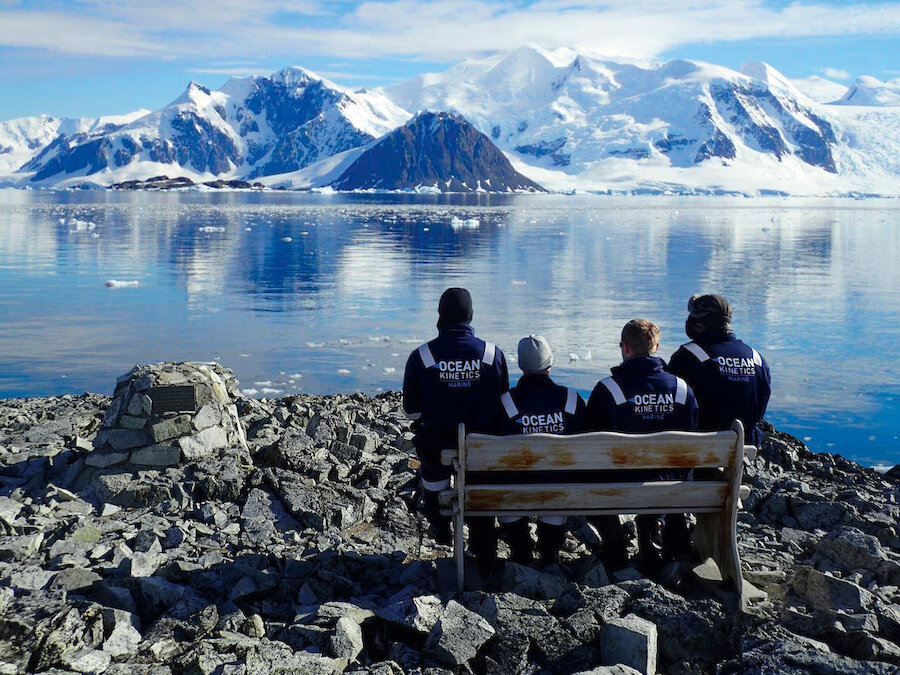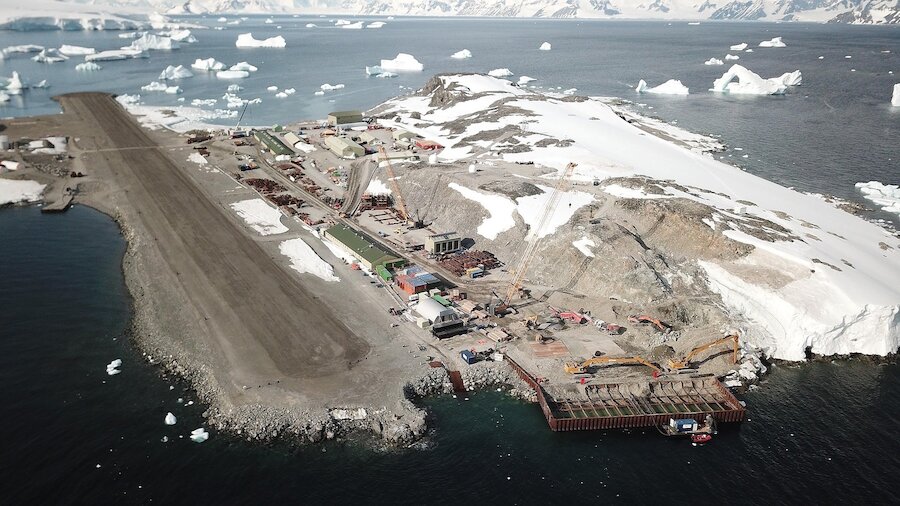A global marketplace is what you make of it. View it from afar, marvel at the economics of massive corporations, or accept what is possible, without restriction or hesitation and put your own profile out there.
It is the latter kind of thinking that has placed Lerwick-based marine engineering firm Ocean Kinetics as a key sub-contractor in the rebuilding of a quay in Antarctica, geographically just about as far away from Shetland as is possible, but from a commercial point of view, it has just been a case of putting the right staff forward for the kind of work that will pay dividends both financially and in reputation.
Ocean Kinetics managing director John Henderson watches the weather forecast in Antarctica on his mobile phone from his desk in Lerwick, as the company’s employees go about their business on the opposite hemisphere, in an opposite season, in an alien environment almost unimaginable from afar, except for the abundance of documentaries that seek to explain the place.
“The world’s a small place these days” observes John, “It’s not much harder to get from Shetland than it is from anywhere else in Europe.” The company has previously fulfilled contracts in Jordan and Libya and is currently scoping a project in Ghana.
“Generally, workers from Shetland-based firms have a good work ethic, are multi-skilled, and open to discussion about whatever the job will entail. Shetland companies are more adaptable and can act quite quickly. We are used to the ups and downs that come with fish farming and the oil and gas industry and it makes us more flexible.”
The benefit of this approach is apparent in the contract with British Antarctic Survey (BAS), in Antarctica. Rather than engaging commercial divers who will perform a single role, the client is gaining multi-skilled experts who will tackle whatever is required to fulfil their contract – an essential principle in such an inaccessible site.

